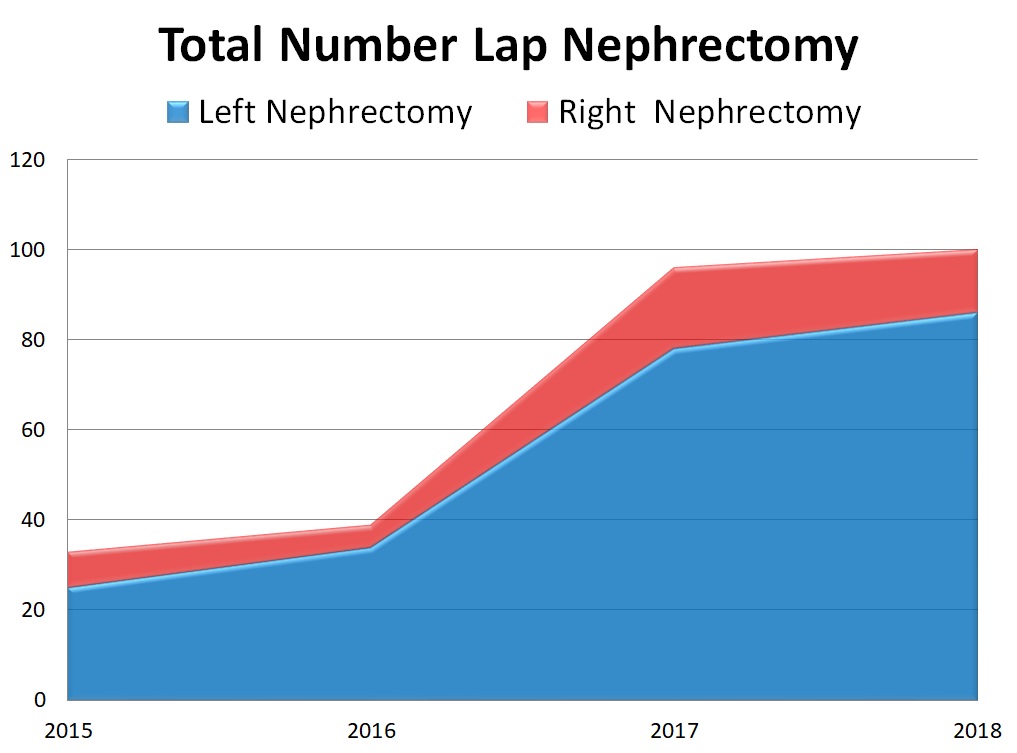Evolution of right laparoscopic nephrectomy: Report of a tertiary care center in Mexico
Lorena Noriega-Salas1, Jose Cruz Santiago1, Manuel Quiñones Gamero1, German Bernaldez Gomez1, Arlette Robledo Melendez1.
1Transplant Unit, IMSS, Mexico City, , Mexico
Aim: The minimally-invasive approach to donor nephrectomy has been primarily driven for nephrectomy in the living donor; nevertheless, Right Nephrectomy (RN) constitutes a major technical challenge. In this study we report the evolution of the surgical technique of RN in our transplant center.
Methodology: An analysis was made of all RN performed in the period between 2015 and 2018. The demographic variables of the donors and recipients, as well as the intraoperative variables, and the early and late evolution were analyzed. We defined Hand-assisted (HA) when the surgeon introduced the hand to the abdominal cavity from the beginning of the surgery, and Modified Hand-assisted (MHA) when the surgeon introduced the hand only for clamping de vessels.
Results: In the period from January 2015 to June 2018, 45 RN were performed, of which 1 was open, 14 HA and 30 were MHA. There was no statistically significant difference in the operative time between HA and the MHA; a lower amount of intraoperative blood loss was reported in the MHA technique (p = 0.04), as well as a lower incidence of postoperative ileus, and an earlier onset of walking (p = 0.01) associated with better pain management (p = 0.049), and a shorter average hospital length of stay (p = 0.05). Regarding graft in the recipient, there was no significant difference in the warm ischemia time, between both techniques, in all cases there was an immediate graft reperfusion and intraoperative urine production. One complication was registered in a donor, a postoperative bleeding that required open exploration, the patient was discharged after 5 days of staying.
Conclusions: Laparoscopic RN is a technical challenge for the surgeon; however, it can be performed safely. The MHA technique has shown to have better results, compared with the HA technique regarding the evolution of the donor.
